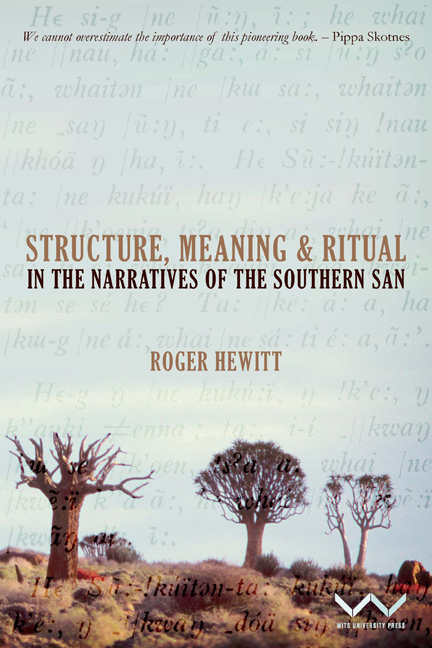Book contents
- Frontmatter
- Dedication
- Contents
- Acknowledgements
- Introduction
- 1 Ethnographic background
- 2 Introduction to the narratives: their context, performance and scope
- 3 Legends and the stories of !Khwa
- 4 Sidereal narratives: the story of the Dawn's Heart and his wife the Lynx
- 5 Animal narratives
- 6 |Kaggen in belief and ritual
- 7 The |Kaggen narratives (1): characters and content
- 8 The |Kaggen narratives (2): sequence and structure
- 9 |Kaggen in belief, ritual and narrative: a synthesis
- 10 Two |Kaggen narratives: compositional variations
- 11 The verbal surface: a note on the narrators
- Appendix A Girls’ puberty observances of the ǀXam
- Appendix B The shamans of the ǀXam
- Bibliography
- Index
1 - Ethnographic background
Published online by Cambridge University Press: 21 April 2018
- Frontmatter
- Dedication
- Contents
- Acknowledgements
- Introduction
- 1 Ethnographic background
- 2 Introduction to the narratives: their context, performance and scope
- 3 Legends and the stories of !Khwa
- 4 Sidereal narratives: the story of the Dawn's Heart and his wife the Lynx
- 5 Animal narratives
- 6 |Kaggen in belief and ritual
- 7 The |Kaggen narratives (1): characters and content
- 8 The |Kaggen narratives (2): sequence and structure
- 9 |Kaggen in belief, ritual and narrative: a synthesis
- 10 Two |Kaggen narratives: compositional variations
- 11 The verbal surface: a note on the narrators
- Appendix A Girls’ puberty observances of the ǀXam
- Appendix B The shamans of the ǀXam
- Bibliography
- Index
Summary
The ǀXam once occupied much of the Calvinia, Prieska and Kenhardt districts of the Republic of South Africa. Their language, with only slight regional differences, was spoken in many parts of the country west of Port Elizabeth and south of the Gariep River. It is likely, but not certain, that all of the speakers of this language called themselves the ǀXam.
All of these ǀXam-speakers are now extinct; many thousands were killed off by white farmers and others, between the early 18th and late 19th centuries. By the first decade of the 20th century numbers were so depleted and their culture so eroded that extinction became inevitable. In the northwestern Cape this process had begun much later than elsewhere because the inhospitable climate and poor farming conditions discouraged white settlement. The northwestern Cape, therefore, formed a pocket in which the San survived longer than they did further to the east and south. However, after the mid-19th century, penetration by the farmers into even this arid country caused severe reductions in the numbers of game animals as farmers hunted with firearms. At the same time the farmers’ cattle broke up the soil crust which supported the plant-life upon which the ǀXam relied for much of their food. The livelihood of the ǀXam was threatened and many were forced to seek employment on the farms.
By the 1870s the process of cultural disintegration was well under way. There is, unfortunately, no information of the extent to which traditional life in this area was maintained under the pressure of European penetration. The texts collected by Bleek and Lloyd often make reference to the beliefs and customs of the informants’ parents, as though these were no longer current. On the other hand, some accounts of rituals, beliefs and social customs are also described as part of contemporary life. This may indicate that while the life of the ǀXam in the Cape was being rapidly destroyed, much still remained intact at the time of collection.
By being both a record of current practices and beliefs, and also containing ethnographic data relating to the period before European settlement in the northwestern Cape, the Bleek and Lloyd texts are the primary source of ethnographic information relating to the ǀXam.
- Type
- Chapter
- Information
- Publisher: Wits University PressPrint publication year: 2008



